Nokia 4A0-103 Alcatel-Lucent Multi Protocol Label Switching Exam Practice Test
Alcatel-Lucent Multi Protocol Label Switching Questions and Answers
Which of the following about configuring an LSP path definition on an Alcatel-Lucent 7750 SR is FALSE?
Click on the exhibit.
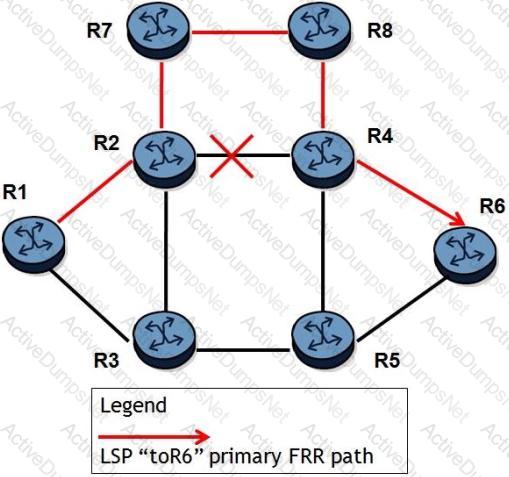
A fully loose LSP MtoR6" is enabled with FRR protection. All links have the same cost. After the link between R2 and R4 goes down, FRR protection repairs the LSP and traffic traverses on R1-R2-R7-R8-R4-R6. By default, which of the following about this LSP on an Alcatel-Lucent 7750 SR is FALSE?
Which of the following about Link TLVs found inside Type 10 Opaque LSAs is FALSE?
Click on the exhibit.
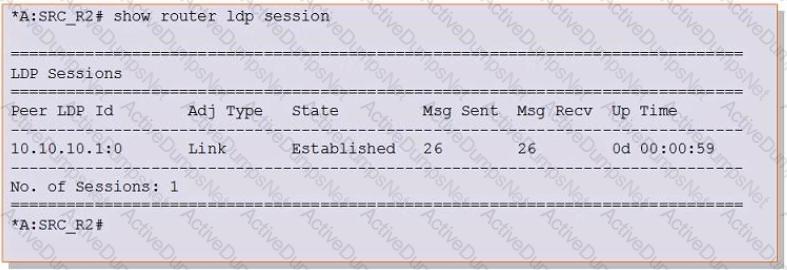
Why might router R2 have a Link LDP session to R1 (10.10.10.1:0) but not to R3 (10.10.10.3:0)?
Which of the following about CAC is FALSE?
Click on the exhibit.
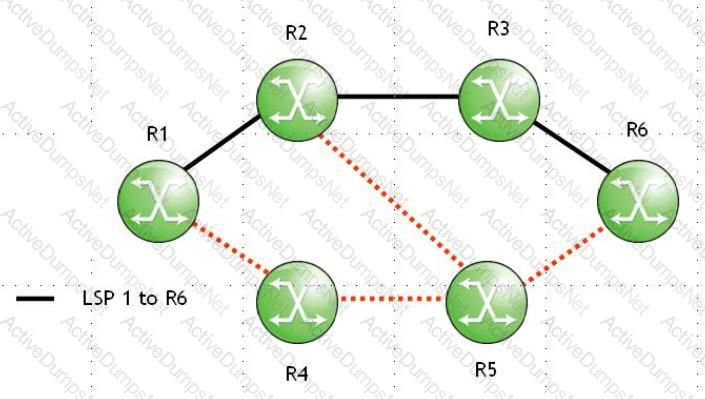
RSVP state for LSP 1 has timed out on router R3. Which of the following actions will router R3 initiate to clear the RSVP session?
Click on the exhibit.
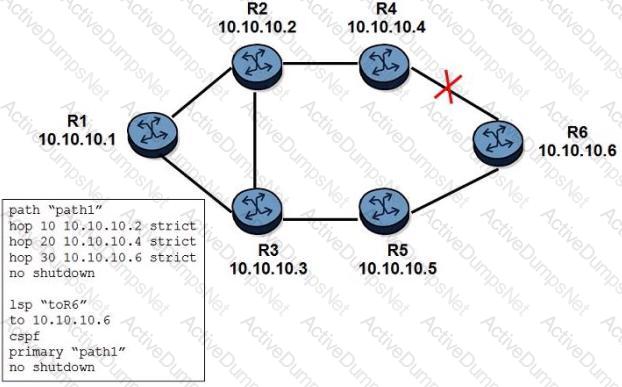
The link between routers R4 and R6 is down before the LSP issignaled. CSPF is enabled on the LSP. Which of the following conditions is TRUE?
An LSP is configured with a fully loose path and CSPF is not enabled. An LSR receives the first PATH message for this LSP. Which of the following is NOT performed by the LSR?
Which of the following about LDP-over-RSVP is TRUE?
Click on the exhibit.
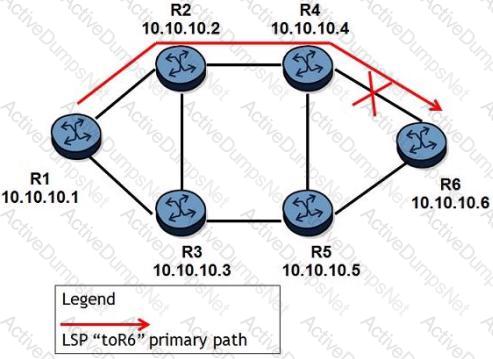
An LSP path is established on router R1 toward router R6. If the link between routers R4 and R6 goes down, which of the following is the quickest way for service recovery?
Which of the following statements regarding the last two octets of the LDP identifier is true?
Which of the following statements best defines an LSP?
What is the function of the MPLS label assigned to a packet?
How many bits of the MPLS header are used for the label field?
Which of the following are the default settings for the Alcatel-Lucent 7750 SR when using LDP?
A targeted-LDP session may exist between directly connected or non-directly connected devices
You wish to build an LSP originating on router R1, transiting the path R1-R2-R4-R5-R6, and terminating on router R6. How many strict hops would you define in your path statement?
Which of the following routing protocols are supported on the Alcatel-Lucent 7750 SR to enable constraint-based LSPs? (Choose two)
Which of the following statements regarding DiffServ-TE LSPs is true?
Click on the exhibit button below.
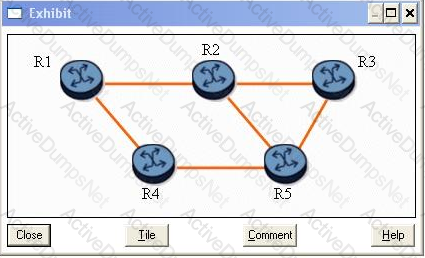
Assuming that LSP R1-R2-R3 requests the default fast reroute configuration, which router becomes a DMP for the detour tunnels?
Which of the following is described by the following statement? An LSR propagates a label mapping only for an FEC for which it has a label mapping for the FEC next-hop.
Which one of the following statements regarding the detour object transported in the detour path message is true?
Fill in the blanks: The device at the beginning of an LSP is referred to as the_________, and the device at the end of an LSP is referred to as the___________.
Click on the exhibit.
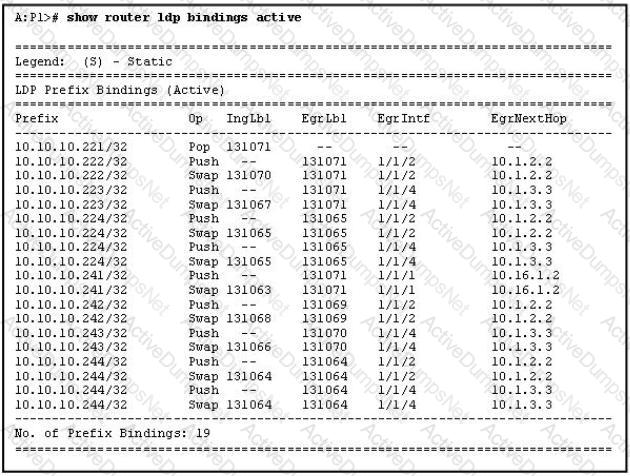
Given the output below, which of the following is FALSE?
Which of the following are characteristics of ECMP LSPs in LDP? Choose three answers
Click on the exhibit button below.
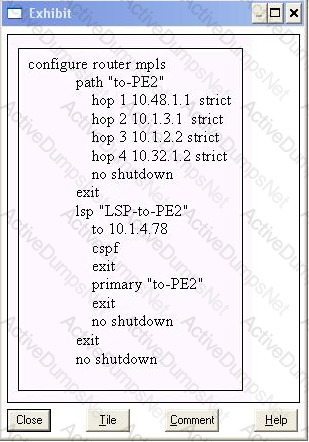
Given the configuration below, which of the following commands would enable fast reroute on the LSP? Choose two answers
Which of the following devices receives labeled packets from the MPLS domain, removes the MPLS header, and forwards unlabeled packets outside the MPLS domain?
Click on the exhibit button below.
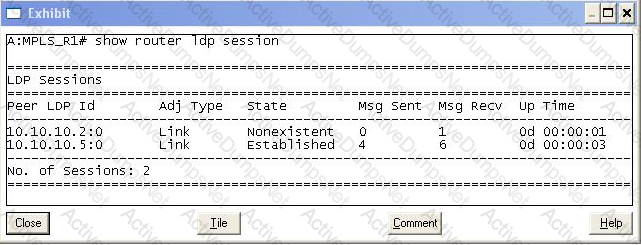
Under which condition might the peer LDP ID 10.10.10.2:0 entry show state "Nonexistent"?
Which of the following statements regarding per-platform label space are true? Choose two answers.
If the destination IP address of a received unlabeled packet is successfully matched in the FIB, which of the following statements are true? Choose two answers.
Click on the exhibit.
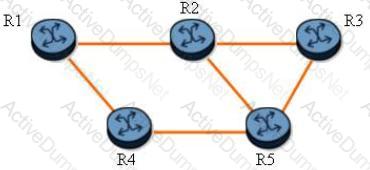
The path of a fast reroute protected LSP is R1-R2-R3. Which of the following about the protected LSP path is TRUE?
Which MPLS mode saves only active label mappings received from peer LSRs?
Which of the following fields does NOT appear in the MPLS label header?
What are the default settings for RSVP-TE on the Alcatel-Lucent 7750 SR?
Click on the exhibit.
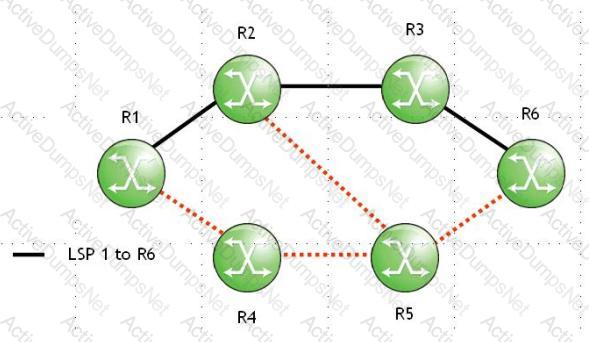
RSVP session state for LSP 1 has timed out on router R3. Which of the following actions will router R3 initiate to clear the RSVP session?
Click on the exhibit.
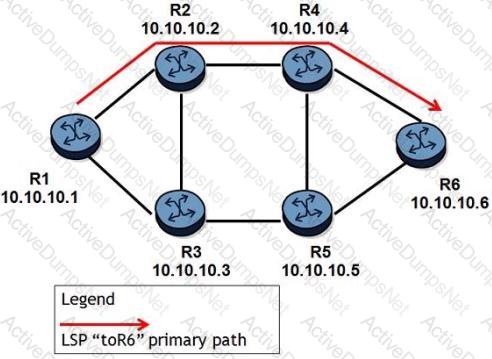
An LSP traverses R1-R2-R4-R6 and one-to-one fast reroute with link protection is enabled. All links have the same cost. Which of the following about DMP and MP is TRUE?
To enable the LDP-over-RSVP feature, which of the following configurations is NOT required on an Alcatel-Lucent 7750 SR?
